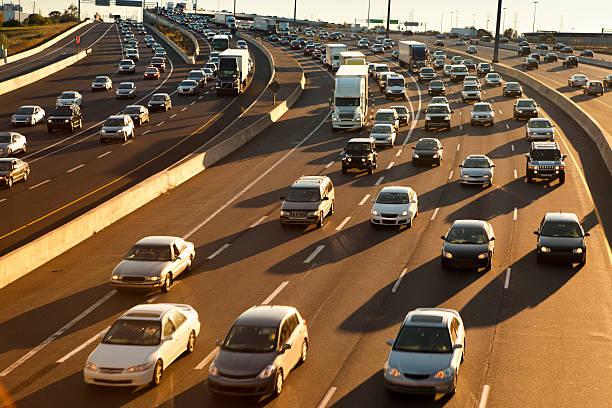The Impact of Melbourne Traffic on Car Wear and Tear

Melbourne’s traffic has become one of the biggest challenges for everyday drivers, with long queues, frequent congestion, and slow-moving lanes creating constant strain on vehicles. Continuous stop and start driving forces the engine, tyres, brakes, and other mechanical parts to work harder than they were designed for, increasing wear and reducing the overall lifespan of the car. Understanding how the city’s traffic affects vehicles can help owners stay prepared and manage maintenance more effectively.
How Constant Stop and Start Driving Affects the Engine
Heavy traffic conditions require drivers to accelerate and brake repeatedly, which prevents the engine from maintaining a steady rhythm. This behaviour increases internal friction, reduces efficiency, and forces the engine to burn more fuel. Over time, these conditions create additional stress on components that should ideally operate under stable driving speeds.
Impact of Congestion on Brakes
Daily congestion in Melbourne means drivers must slow down or come to a complete stop every few seconds during peak hours. This continuous braking causes brake pads and discs to wear out much faster than they normally would. As the braking system experiences more friction and heat, its lifespan shortens, and owners face more frequent and costly replacements.
Effects of Road Conditions on Suspension
Melbourne roads often include uneven surfaces, construction areas, and frequent speed bumps, which place extra load on the suspension system. The shocks and vibrations created by these conditions gradually weaken the struts, springs, and bushings. Even well-maintained suspension systems can deteriorate faster when exposed to such road conditions every day.
Heat Buildup in Heavy Traffic
Slow-moving traffic limits airflow to the engine bay, which leads to heat buildup when the vehicle remains at low speeds for long periods. Without proper airflow, the cooling system must work much harder to maintain temperature stability. This can weaken hoses, reduce coolant performance, and increase the likelihood of overheating in older or poorly maintained vehicles.
Increased Tyre Wear in Urban Driving
Frequent braking, sharp turns in narrow streets, and constant low-speed movement place continuous pressure on tyres. Melbourne’s tight parking spaces and busy intersections also lead to higher friction on tyre surfaces. These factors cause uneven tread wear, reducing tyre stability and shortening their usable life.
Decline in Fuel Efficiency Due to Traffic
Traffic prevents vehicles from reaching consistent travel speeds, which leads to inefficient fuel burning. Engines consume more fuel when they constantly idle or accelerate from low speeds, making urban driving more expensive. Melbourne drivers often notice a significant difference in fuel consumption when comparing highway driving to city traffic conditions.
Stress on Transmission in Stop-and-Go Traffic
Automatic transmissions experience increased stress when stuck in constant stop-and-go situations. Frequent gear shifting and low-speed torque demands cause transmission fluid to heat up more quickly, which can affect lubrication and reduce the transmission’s internal health over time. If not monitored, this can lead to costly repairs.
Steering System Wear in Busy City Roads
Driving through Melbourne’s dense urban areas requires constant steering adjustments, especially in narrow lanes and crowded parking areas. Repetitive steering movement increases pressure on the steering rack, pump, and associated components. Over time, this continuous motion can impact handling and cause premature wear.
Battery Strain from Frequent Idling
When a vehicle idles in traffic, the engine produces limited power while electrical components continue drawing energy. This imbalance forces the battery to compensate, which can reduce its lifespan. In traffic-heavy cities like Melbourne, batteries often need replacement sooner than expected.
Effects of Heavy AC Usage in Congested Areas
Air conditioning systems work harder during slow traffic or hot weather because airflow around the vehicle is restricted. This extra pressure on the compressor and cooling system can reduce its long-term performance. Prolonged stop-and-go driving often leads to early AC maintenance or component failure.
Exhaust System Issues from Low-Speed Driving
Low-speed driving allows carbon deposits to build up inside the exhaust system because the engine does not reach the temperature needed to burn them off. Over time, these deposits can clog parts of the exhaust system, including the catalytic converter, affecting fuel efficiency and engine performance.
Shortened Engine Oil Life
Traffic causes engines to run hotter for longer periods, which affects the chemical stability of engine oil. When oil breaks down faster, lubrication becomes less effective and leads to increased friction inside the engine. This accelerates wear on essential parts and shortens the time between oil changes.
How Traffic Reduces Car Resale Value
Vehicles driven primarily in congested city conditions often experience faster deterioration in engines, brakes, tyres, and suspension components. During resale evaluations, buyers and dealers consider this type of wear to be higher risk. Cars exposed to heavy urban driving typically receive lower market valuations due to expected future repairs.
Creating a Maintenance Routine for Traffic-Heavy Driving
Car owners in Melbourne must adopt a more frequent maintenance routine to counter the effects of daily congestion. Regular oil changes, brake checks, tyre inspections, and cooling system monitoring can reduce the risks associated with city driving. Staying ahead of maintenance needs helps vehicles stay reliable and prevents unexpected breakdowns.
When Long-Term Traffic Damage Leads to Disposal
If heavy traffic exposure damages the engine or other crucial systems beyond economical repair, owners may need to consider selling or disposing of the vehicle. Many drivers look for resources like a guide to sell engine damage car when repair costs exceed the overall value of the vehicle, especially when the damage is caused by long-term city driving pressures.
Final Thoughts
Melbourne’s traffic has a noticeable impact on every part of a vehicle, from the engine and brakes to the tyres and transmission. By understanding these effects and maintaining a proactive care routine, drivers can protect their vehicles from early deterioration. Regular maintenance, careful driving habits, and awareness of the city’s traffic challenges allow car owners to extend the life of their vehicles and avoid unnecessary expenses.





